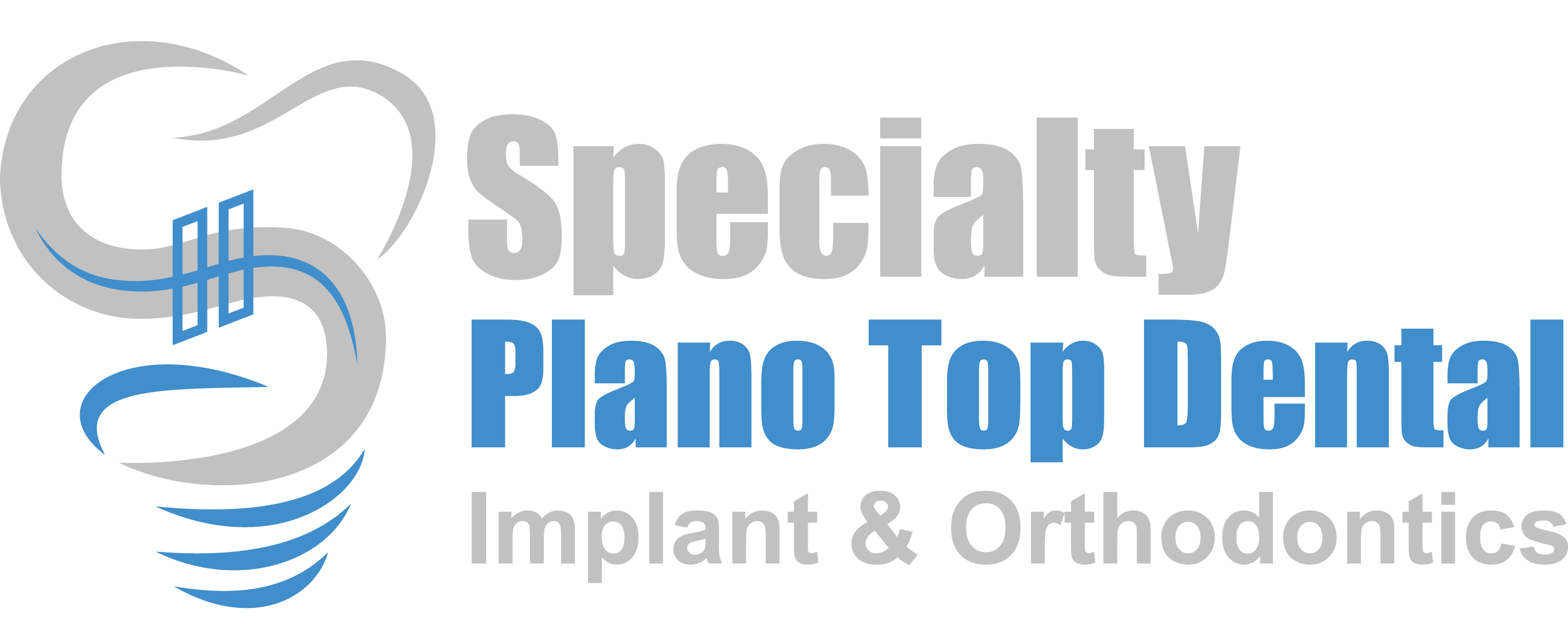Prosthodontics
We believe everyone deserves to eat comfortably, speak freely and smile with confidence. Our goal is to ensure every one of our patients achieves this outcome. prosthetic services that include complete dentures, removable and fixed appliances, and implants. Patients requesting prosthodontic treatment are able to choose from different options.
Prosthodontics and Implant Dentistry offers a range of treatments to improve the health, function, and appearance of your teeth.

Dental Crowns & Bridges
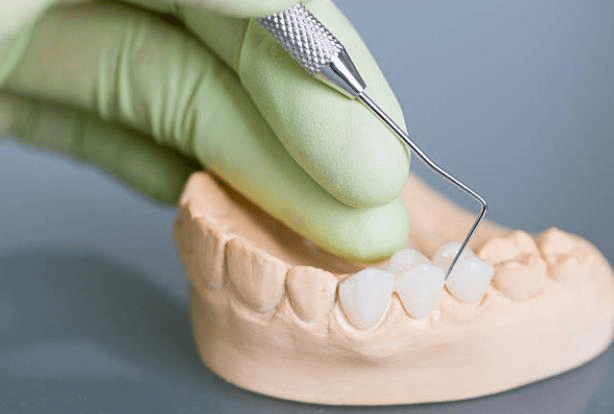

Dental crowns are ceramic caps placed over teeth to restore their shape, size, and strength. They are used for teeth with large fillings, those that have undergone root canals, fractured or worn teeth due to grinding, and teeth that are misshapen or discolored. Crowns provide both functional and aesthetic improvements, ensuring a natural look and durable protection.
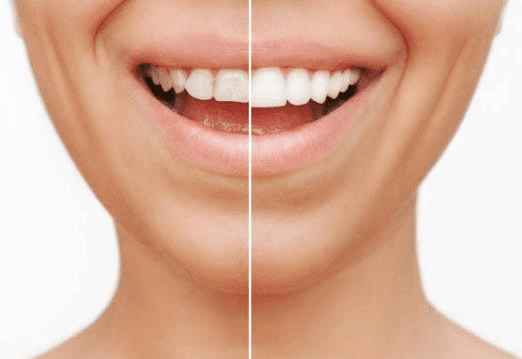

What Are The Different Types Of Crowns?
These crowns consist of a metal base covered with a layer of ceramic. They offer good strength and can be color-matched to adjacent teeth, making them suitable for back teeth. However, if gums recede, the underlying metal may become visible, creating a dark line at the gum line.
▪ All-Ceramic or All-Porcelain Crowns:
These crowns are metal-free and provide superior aesthetics with a natural color. They are ideal for front teeth but can also be used for back teeth. Newer materials like Zirconia have enhanced the durability of all-ceramic crowns, making them highly resistant to damage and a great option for those with metal allergies or grinding issues.
Partial & Complete Dentures
Dentures are custom-made replacements for missing teeth. They can be either complete dentures, which replace all teeth, or partial dentures, which replace some teeth. Depending on the patient’s needs, dentures can be removable or fixed using implants. By matching the patient’s unique smile and bite, dentures improve facial appearance, speech, chewing ability, and self-confidence.




Types of Full Dentures
▪ Immediate Dentures:
Placed right after tooth extraction, these temporary dentures provide immediate teeth but may not fit perfectly due to gum shrinkage and muscle adjustments.
▪ Conventional Full Dentures:
Crafted after healing, these permanent dentures fit accurately and resemble natural teeth, offering long-term functionality.
▪ Implant-Supported Overdentures:
Secured with dental implants, these dentures offer superior stability. The upper jaw typically requires more implants due to lower bone density, ensuring comfort and functionality.
Types of Partial Dentures
Transitional Partial Dentures:
Affordable, removable plastic dentures used temporarily during healing after tooth extraction. Suitable for interim tooth replacement before dental implants.
Removable Partial Dentures (RPDs):
Lightweight metal-based dentures that fit better than plastic ones. More expensive than plastic but cheaper than implants or fixed bridgework.
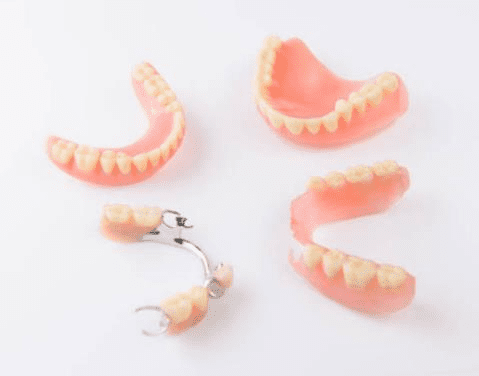



Dental Implant Restorations
Dental implant restorations are advanced procedures that replace missing teeth with prosthetic teeth anchored to titanium implants surgically placed into the jawbone. This method offers a highly durable, functional, and aesthetically pleasing solution for tooth loss.
Advantages:
• Durability: Implants are made from strong materials like titanium, ensuring long-lasting results.
• Functionality: They function like natural teeth, allowing for normal eating and speaking without the issues associated with dentures.
• Aesthetics: The prosthetic teeth are designed to match the appearance of natural teeth, providing a seamless and attractive look.
• Bone Health: Implants help maintain jawbone density and prevent bone loss that often occurs with missing teeth.
• Comfort: Unlike traditional dentures, implants do not slip or cause discomfort, as they are securely anchored in the jawbone.
• Convenience: Dental implants eliminate the need for adhesives and reduce the maintenance required for traditional dentures.
What Is The Procedure?
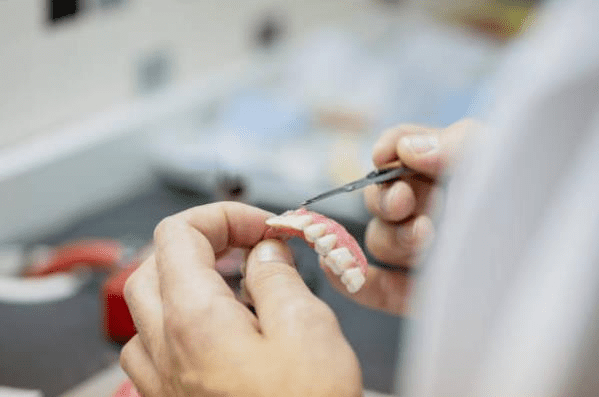

▪ Consultation: The process begins with a thorough examination and planning phase, including X-rays or CT scans to assess the jawbone structure.
▪ Implant Placement: Titanium implants are surgically placed into the jawbone and allowed to integrate over a few months.
▪ Abutment Placement: Once the implant has fused with the bone, an abutment is attached to connect the implant to the prosthetic tooth.
▪ Prosthetic Attachment: A custom-made prosthetic tooth (crown) is attached to the abutment, completing the restoration process.
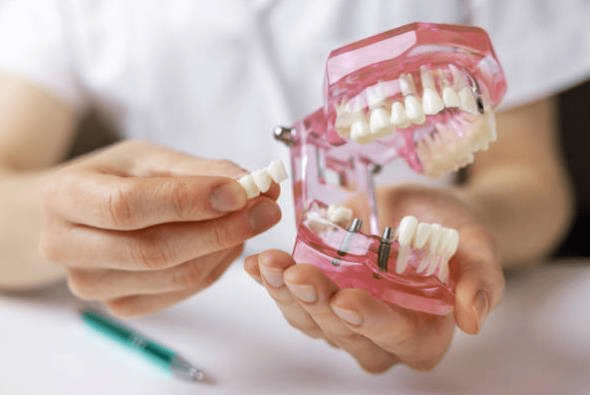

Indications Of Dental Implant Restorations
Dental implant restorations are recommended in various clinical scenarios:
1. Replacing a Single Tooth: Ideal for substituting a missing tooth without impacting neighboring healthy teeth.
2. Multiple Missing Teeth: Perfect for restoring several missing teeth located in different parts of the mouth.
3. Complete Arch Replacement: Suitable for individuals who have lost all teeth in either the upper or lower jaw, using implant-supported bridges or overdentures.
4. Unstable Dentures: An excellent option for those who experience discomfort or instability with traditional removable dentures.
5. Preventing Bone Loss: Advised for patients aiming to avoid jawbone resorption, which often occurs after tooth loss.
Smile Makeover
This comprehensive treatment involves rebuilding and replacing all the teeth in your mouth, blending aesthetics with restorative dentistry. It includes various procedures such as crowns, bridges, veneers, dental implants, and dentures to enhance your smile and improve chewing efficiency.
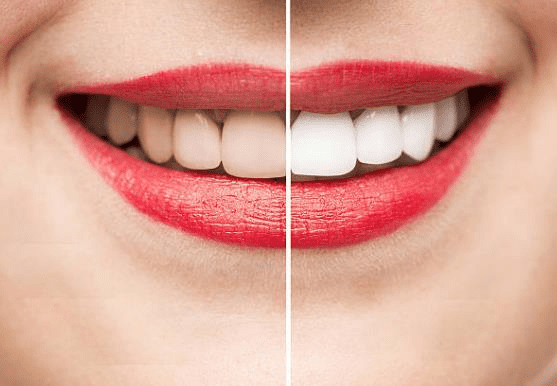



Your Smile, Our Signature
Functional Benefits:
Treatments like dental implants, crowns, and bridges can restore missing teeth, improve chewing function, enhance speech, and promote overall oral health.
Long-Term Results:
Unlike temporary solutions such as teeth whitening or bonding, a smile makeover provides enduring results. By addressing underlying dental problems and opting for comprehensive treatment, you can enjoy a beautiful, healthy smile that lasts for years with proper care.
Schedule Your Smile Makeover Consultation Today
Full-Mouth Rehabilitation
Full-mouth rehabilitation, or full-mouth reconstruction, is an extensive dental treatment designed to restore the function, aesthetics, and health of your entire mouth. This comprehensive procedure typically integrates multiple dental specialties, such as prosthodontics, orthodontics, periodontics, and oral surgery, to address complex dental issues and deliver optimal results.
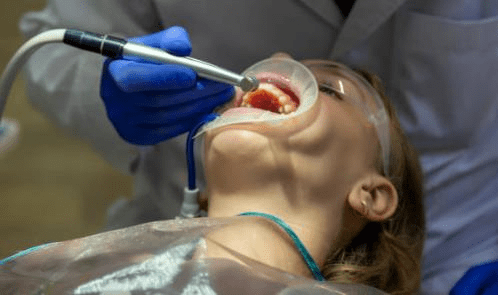

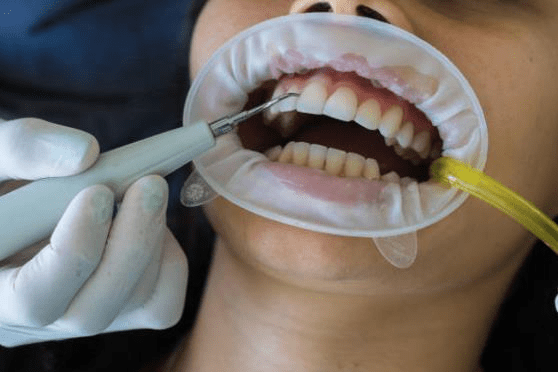

Indications For Full-Mouth Rehabilitation
Full-mouth rehabilitation is recommended in several clinical situations:
Benefits Of Full-Mouth Rehabilitation
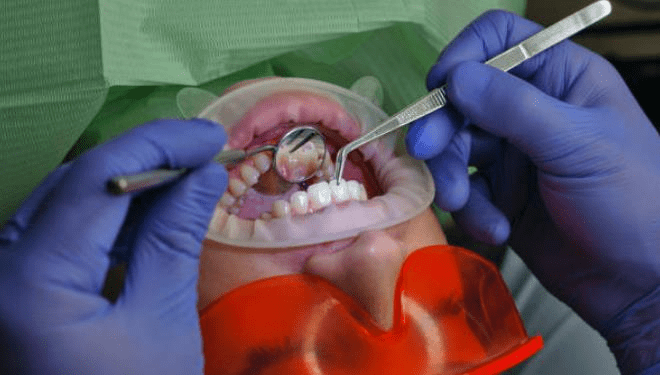

▪ Restored Functionality: Enhances chewing, speaking, and oral functions by addressing issues such as missing teeth and malocclusion.
▪ Enhanced Aesthetics: Provides a more natural and attractive smile through advanced procedures like implants, crowns, and veneers.
▪ Improved Oral Health: Treats and manages underlying dental conditions, leading to better overall oral health and preventing further issues.
▪ Long-Term Stability: Offers durable and stable restorations that can last many years with proper care.
▪ Increased Comfort: Alleviates pain and discomfort associated with dental problems such as tooth wear and periodontal disease.
▪ Boosted Confidence: Transforms the appearance of your smile, enhancing self-esteem and overall quality of life.
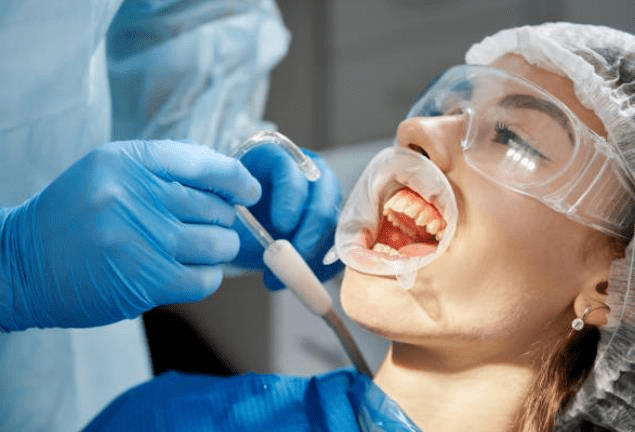

Components of Full Mouth Rehabilitation
Full mouth rehabilitation offers a tailored approach to restoring both function and aesthetics. This comprehensive treatment plan may include:
• Dental Implants: Replace missing teeth with durable, natural-looking prosthetics that provide a solid foundation.
• Crowns and Bridges: Restore damaged or missing teeth, enhancing both function and appearance.
• Veneers: Improve the look of front teeth by covering imperfections with custom-made shells.
• Orthodontics: Correct misalignment and bite issues for a healthier, straighter smile.
• Periodontal Treatments: Address gum disease to support the health of the teeth and surrounding structures.
• Oral Surgery: Perform essential procedures like extractions and bone grafting to support overall dental health.
Veneers And Cosmetic Dentistry
Veneers are ultra-thin porcelain shells designed to perfect the shape and color of your teeth. They provide a quick and effective way to achieve a stunning, natural-looking smile. By seamlessly covering imperfections, veneers enhance both the aesthetics and confidence of your smile.


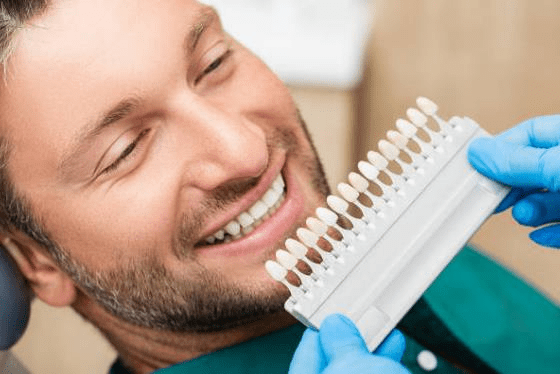

Achieve A Flawless Smile
Veneers effectively mask a range of cosmetic flaws, including:
• Chips.
• Cracks.
• Discoloration.
• Short or misshapen teeth.
• Small gaps.
• Minor misalignment.
Whether you need a single veneer to perfect a problem tooth or a full set of 4–8 veneers for a complete smile makeover, veneers can transform your smile. While typically used on upper teeth, veneers can also enhance the appearance of lower teeth, offering a versatile solution for achieving a stunning, cohesive look.
The Process
Consultation:
We’ll discuss your smile goals and assess if veneers are suitable for you based on your oral health.
Preparation:
We’ll remove a thin layer of enamel and take impressions for custom veneers. You’ll receive temporary veneers while your permanent ones are made.
Placement:
At your follow-up, we’ll fit and attach the veneers, giving you a beautiful, natural-looking smile.
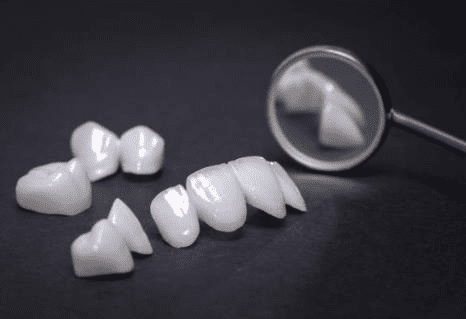

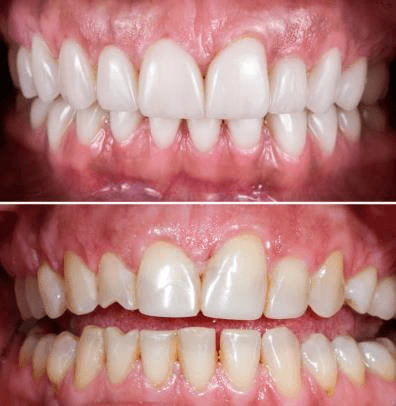

How To Care For Your Veneers
▪ Maintain Excellent Oral Hygiene: Keep the teeth beneath your veneers healthy to support their longevity.
▪ Moderate Staining Foods: While porcelain resists stains, foods and drinks like coffee and wine can cause discoloration over time.
▪ Avoid Hard Objects: Don’t bite down on ice or hard items, and wear a mouthguard during sports to prevent breakage.
▪ Schedule Regular Checkups: Routine visits help keep your veneers polished and maintain their shine.
Digital Smile Design (DSD)
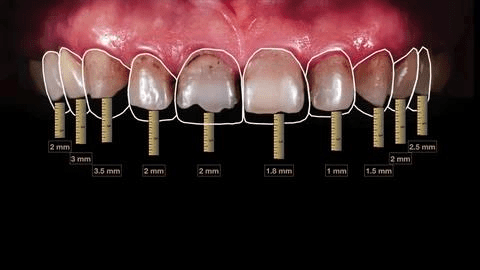

Digital Smile Design (DSD) is a cutting-edge approach in cosmetic dentistry that uses advanced digital technology to personalize and perfect your smile. By integrating digital imaging and design tools, DSD enables dental professionals to create a customized smile that aligns with your unique facial features and preferences, ensuring both beautiful and predictable results.


Main Aspects Of DSD
Benefits Of Digital Smile Design
▪ Enhanced Precision: Digital tools provide exact measurements and simulations for accurate treatment planning and results.
▪ Predictable Outcomes: Visualizing potential results in advance helps both patients and dentists plan for the final aesthetic outcome.
▪ Improved Patient Experience: Clear previews and explanations increase patient confidence and satisfaction with their treatment.
▪ Efficiency: DSD reduces guesswork and adjustments, streamlining the workflow and potentially shortening treatment time.
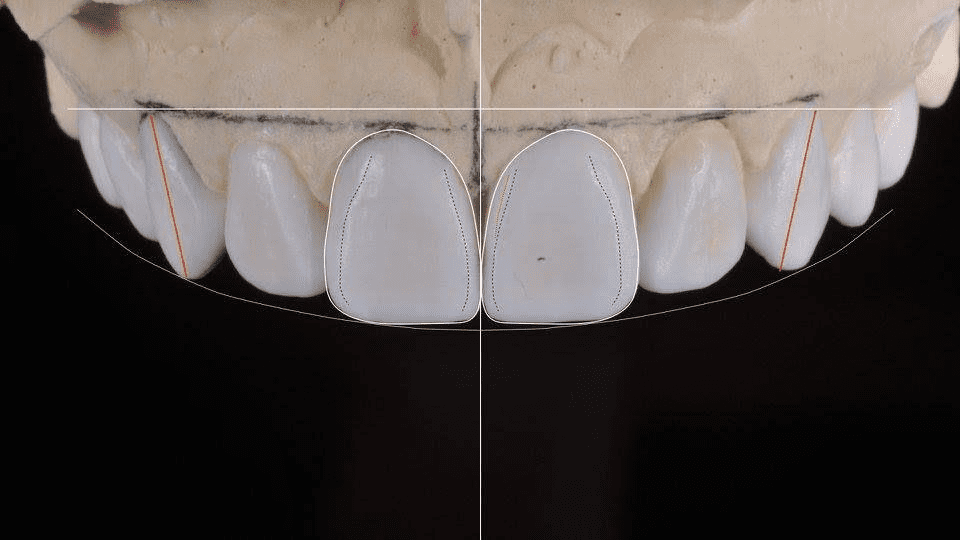

Night Guard
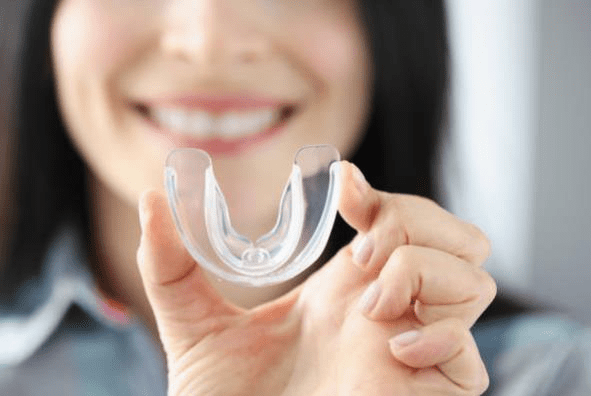

Night guards are dental appliances crafted to shield your teeth and jaws from the damaging effects of bruxism (teeth grinding) and temporomandibular joint (TMJ) disorders while you sleep.
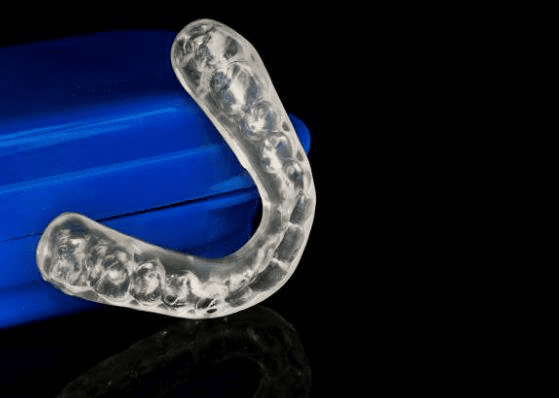

Benefits Of Night Guards
Types Of Night Guards
Usage and Maintenance
• Usage: Wear night guards while sleeping. Clean them regularly with a toothbrush, mild soap, or denture cleaner.
• Regular Check-ups: Visit your dentist for routine check-ups to ensure the night guard remains effective and fits properly.


Teeth Whitening And Bleaching
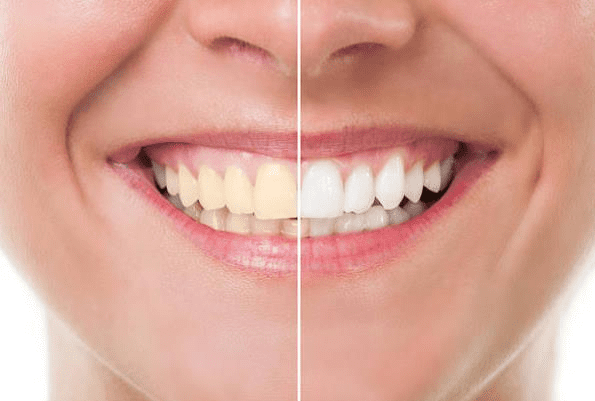

Night guards are dental appliances crafted to shield your teeth and jaws from the damaging effects of bruxism (teeth grinding) and temporomandibular joint (TMJ) disorders while you sleep.
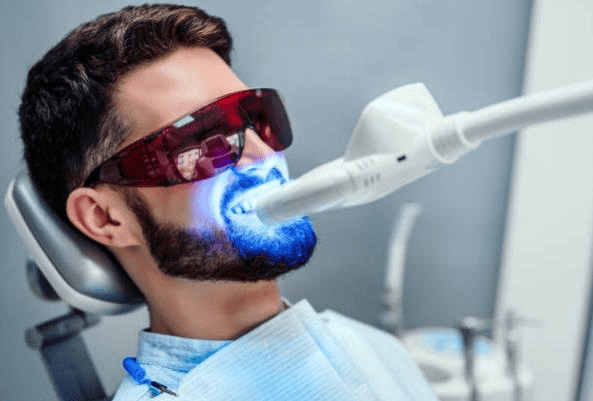

Laser Teeth Whitening
Laser teeth whitening is an advanced in-office procedure designed to significantly brighten your smile. It combines a bleaching gel with a high-intensity laser. During the treatment, our specialist applies a whitening gel to your teeth and uses a laser to activate the gel’s whitening agents. This process heats the gel, accelerating its stain-fighting properties and breaking down discoloration. The result is a visibly whiter smile with reduced tooth discoloration.
Home Whitening
Home whitening begins with taking impressions of your teeth to create custom trays that perfectly fit your dental contours. You’ll receive a bleaching gel to use with these trays. We’ll provide detailed instructions on how to use the trays and gel at home. Typically, stains are removed within 6 to 7 days of use.
For optimal results, combining home whitening with in-office treatments is recommended. Contrary to common myths, whitening procedures do not cause permanent side effects on your teeth.


